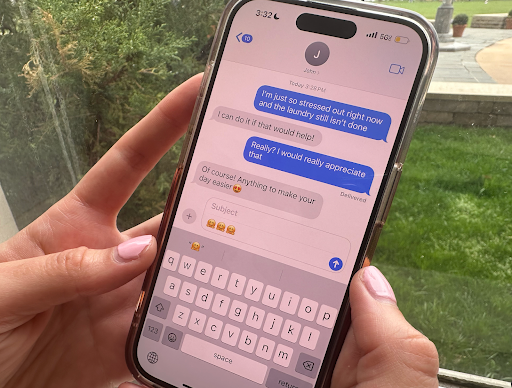
The five love languages — first developed and described by author Gary Chapman in 1992 — describe how people receive and express love in relationships. The five languages are words of affirmation, quality time, physical touch, acts of service and receiving gifts.
Expressing this feeling is not as simple as it may seem. Many people show it in ways that they need to feel love, as opposed to the ways that a partner needs to feel it. Being aware of your partner’s love language and expressing your own is a great way to build a strong foundation that allows both parties to feel loved and appreciated.
The Five Love Languages Defined
For those who speak the language of words of affirmation, verbal expressions hold immense power. Simple words or phrases like “I love you” or “this made me think of you” carry deeper meaning than one might think. Not only do these words express in-the-moment feelings, but they also underscore how the person saying them genuinely feels.
The most popular love language in the United States is quality time. Undivided attention is the cornerstone of this love language. This does not have to be spending every day of the week with one another; however, it does mean that the time spent together, even if it’s one hour, is full of fun and love. Meaningful conversation, shared experiences and dedicated time together nurture the connection between one another.
If your love language is physical touch, this means that you prefer physical expressions of love over verbal or gift-giving. Though physical touch may allude to something more, there are specific nuances like a hug or holding hands that are just as meaningful. Physical closeness communicates love, warmth and security for those who resonate with this language.
Actions, as they say, speak louder than words, especially for individuals who are fluent in the love language of acts of service. Whether it’s cooking a meal, running errands or even offering a helping hand, these acts demonstrate care and devotion.
When it comes to receiving gifts, it’s not about materialism; it’s about the thought and effort behind the gift. From a handwritten note or a meaningful trinket to a favorite candy or a spontaneous bouquet, these are gestures that symbolize thoughtfulness.
The Importance of Knowing Your Love Language
Understanding your primary love language can transform how you navigate relationships. It’s not just about knowing your own but also recognizing and honoring your partner’s.
To identify your love language, you can ask yourself questions — such as “Do you feel more loved when your partner surprises you with flowers or when they do the laundry?” You can also take a quiz based on Chapman’s book, “The 5 Love Languages;” here, you are prompted with various instances and situations in which you respond with what act or example of a love language is most meaningful.
Having such an awareness of your own and your partner’s personal love language fosters empathy, enhances communication and paves the way for a deeper emotional connection.
Applying Love Languages in Relationships
Communicating your needs is a crucial step in applying your love language to a relationship or in everyday life. Once you know your love language, share it with your partner patiently and honestly. Expressing how they can best communicate love to you and how you can do the same for them will create an open understanding of what each party requires.
By showing appreciation, you are actively acknowledging and valuing your partner’s efforts in their love language. It may not be easy for people to say what they need or want, so showing appreciation for their honesty will help emotional progress. If your partner thrives on acts of service, reciprocate by taking on tasks that lighten their load or brighten their day.
It is important to remain flexible when it comes to love languages because they can evolve over time. Stay attuned to your partner’s changing needs and be open to adapting your expressions of love accordingly. This way, your relationship can grow and evolve as a result of your love languages doing the same.
Knowing and understanding these five love languages offers a roadmap to a fulfilling relationship. By speaking each other’s love languages, couples can bridge emotional gaps, cultivate understanding and create a beneficial and lasting relationship.







